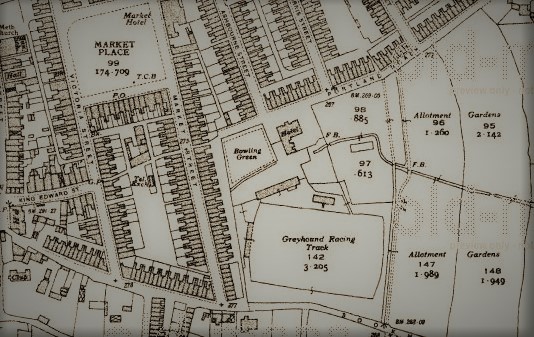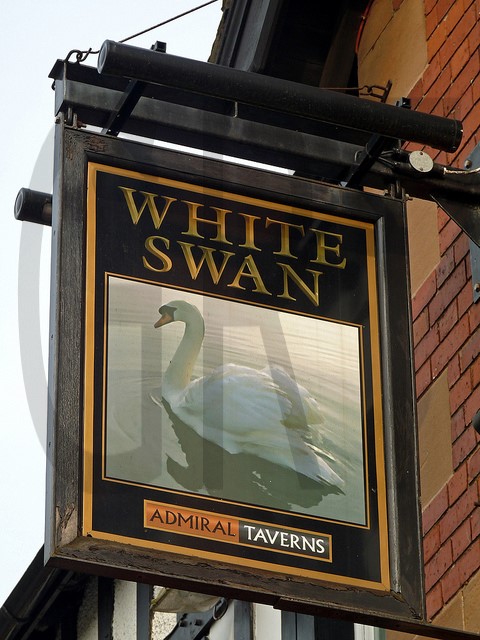Portland Road, Shirebrook, Derbyshire.
POSTCODE———————————NG20 8AE
LOCATED————————————About half a mile south west of Shirebrook Railway Station and very close to the town centre.
ORIGINAL SITE—————————–Ashbourne Farm before land was transformed into a football ground for Shirebrook Football Club. Once the football club had folded it was then it became a Greyhound stadium.
DATE CONSTRUCTED——————-1926
DATE VENUE OPENED——————1926
Meaning other sports may have taken place prior to the arrival of Greyhound Racing.
FIRST MEETING—————————-July 30th 1932.
Greyhound Racing only.
LICENSED OR INDEPENDENT———-Independent
All venues covered would have to be licensed with the government, licensed suggested in this section would refer to tracks operating under NGRC Rules.
INSIDE OR OUTSIDE HARE TYPE——Inside Sumner installed during 1952.
Please note that the Electric Hare suggested is only a guidance and would have been in operation for a certain amount of time at this venue. Although it is not necessarily guaranteed that it was operational all the time, as other types of lure may have been used and updated as time progressed.
DISTANCES———————————–230, 380 and 435 yards.
Please note that most racing venues distances had become varied throughout the years, the ones given above were at once point set and offers only a guidance to the track size.
CIRCUMFERENCE—————————Not known.
Please note that alterations at most racing venues throughout its existence would see that the circumference of the track would vary, the one shown above offers only a guidance to the track size.
BIG RACE NAMES—————————None to mention.
STADIUM SHARED WITH——————Football
LAST MEETING——————————-Early 1961.
Greyhound Racing only.
STADIUM CLOSURE DATE—————-Early 1960’s.
Meaning other sports may have taken place after Greyhound Racing had ceased.
STADIUM DEMOLITION——————–Early 1960’s.
BUILT ON SITE——————————–Housing on Market Close now occupies the site along with a landscaped area.
In some cases, structure’s that originally covered the venue after the stadium had been demolished, may have been themselves demolished too, so the one described is more likely to be the one which now presently covers the site.
EVIDENCE LEFT TODAY——————–Nothing known of, even the White Swan Public House has been replaced recently by a Lidl Store.
FURTHER COMMENTS———————The entrance to this venue was behind The White Swan Public House on Portland Road, which sadly no longer exists.









The small mining community of Shirebrook is found in the county of Derbyshire, situated seven miles east of the M1, and roughly four miles north of Mansfield. During the 1920’s, Whippet Racing had become linked throughout these mining communities as common entertainment, the town of Shirebrook being no different, and would certainly have contributed to why Greyhound Racing developed in the town.
The opportunity came after an enclosed football ground owned by the council, had been made available by a local amateur football club folding in 1930. This venue was located southeast of the town centre, about half a mile down the road towards the town’s railway station. The original site had been occupied by the abandoned Ashbourne Farm, but things changed considerably in 1926, when an enclosed sports ground began to develop on the grounds, with the view of becoming the home to Shirebrook football club. Access to the ground was down by the side of the recently demolished White Swan Public House, who’s name became linked to the new venue, becoming known as The White Swan Ground. Success of the club was almost imminent, with their second season witnessing the grounds record attendance of 7,000 on the 26th of November 1927, against Tranmere Rovers in the first-round proper of the FA Cup. Alarmingly, success did not stay around for too long, as the football club ran into financial difficulties, and by 1930 Shirebrook Football Club had folded.
The stadium remained idle for a couple of years, until an approach was made by a Greyhound Racing Company to the council, to lay a track around the sports field and convert the venue into a greyhound stadium. The new venture began as an independent track, and witnessed its first meeting on the 30th of July 1932, with five, six and sometimes seven greyhounds contesting over race distances of 230, 380 and 435 yards.
Even with the interruption of the Second World War, Shirebrook greyhound track gained permission to host meetings, albeit in daylight hours only. Greyhound racing ceased during early 1961, with the site having been sold for housing development.
Today, nothing remains evident of the stadium having ever been there, as part of the site is nothing more than a section of landscaped grassland, along with a handful of dwellings found on Market Close. It is only recently that The White Swan Public House on Portland Road has been demolished, having now been replaced by a new Lidl supermarket, which now becomes the new landmark to identify the location on were the greyhound stadium once lay.
A programme, photograph or even memorabilia for this track is required for this page, if you can help please contact me.

Recent Comments